The answer is of course a resounding yes.
Now is the time to invest in electric vehicle charging. Things are moving fast, both in terms of technology and availability. And the environment must benefit in every way.
Sales of electric cars are ticking along quite well, with fewer and fewer motorists considering driving on gasoline or diesel. The growth of plug-in cars has been 29% in the last year. The total electrified fleet has now crossed the ten percent mark. The plug-in fleet grew by 137 044 vehicles in 2023, mainly pure electric cars and light trucks. In February 2024, there were over 573 342 rechargeable cars in the country. Add 1 226 buses, up to 2 735 motorcycles and soon 22 584 light trucks and over 521 heavy trucks.
However, the strong growth of recent years slowed down last year, despite the fact that the vehicle fleet grew more than the year before in several segments. The biggest declines were seen in plug-in hybrids and motorcycles. Power Circle, an advocacy group for the future of electrification, has received signals from the industry that they believe growth will slow down in 2024 as well. But our hunch is that the slowdown is only temporary.
The forecast for 2024 is that 35% of new car sales will be electric cars, according to the industry organization Mobility Sweden, which also believes that policy instruments are needed to increase the share of electric cars in total passenger car sales.
At the start of 2024, there were around 32 000 public charging points in Sweden according to several sources, including Allt om bil. Despite an increase of 70-80%, the country needs more charging points, as more and more people choose electric cars. As we are now approaching 600,000 rechargeable cars, the National Association M believes that there are over 26,000 charging points missing.

Right now, we live in a troubled world of recession, which has led to long delivery times. The end of the electric car bonus in 2022 has added to this. France has gone in the opposite direction and implemented radical measures in cooperation with electric car manufacturers to stimulate sales, not least a generous electric car bonus aimed primarily at low-income earners. Shouldn’t Sweden follow the same path? We are facing an environmental threat that is becoming increasingly apparent. Mobility Sweden believes that there is a need for policy instruments aimed at those who cannot afford them in Sweden as well.
Another prerequisite for the electrification of the vehicle fleet to take off is that the public charging infrastructure is expanded at the same rate. Afir, which stands for the Regulation on the deployment of alternative fuels infrastructure, is tasked with boosting the infrastructure for alternative fuels in the EU. One part of the regulation, which will enter into force on 13 April 2024, concerns the possibility of paying for electric vehicle charging at public locations by card. As of January 1, 2027, fast chargers for public charging points must have a card reader or a contactless payment option. This also applies to those charging points installed before April 13, 2024.
According to the Nordic database for charging station data, now under the Swedish Energy Agency, the number of charging stations and charging points has increased constantly month by month over the past year. Apart from the fact that most EV owners who live in a house install charging, it is now incredibly easy and simple to both install, operate and charge charging for a BRF, a property owner or a company. Planning your trip in advance is also becoming routine for electric car drivers, but of course you want even more public charging points.
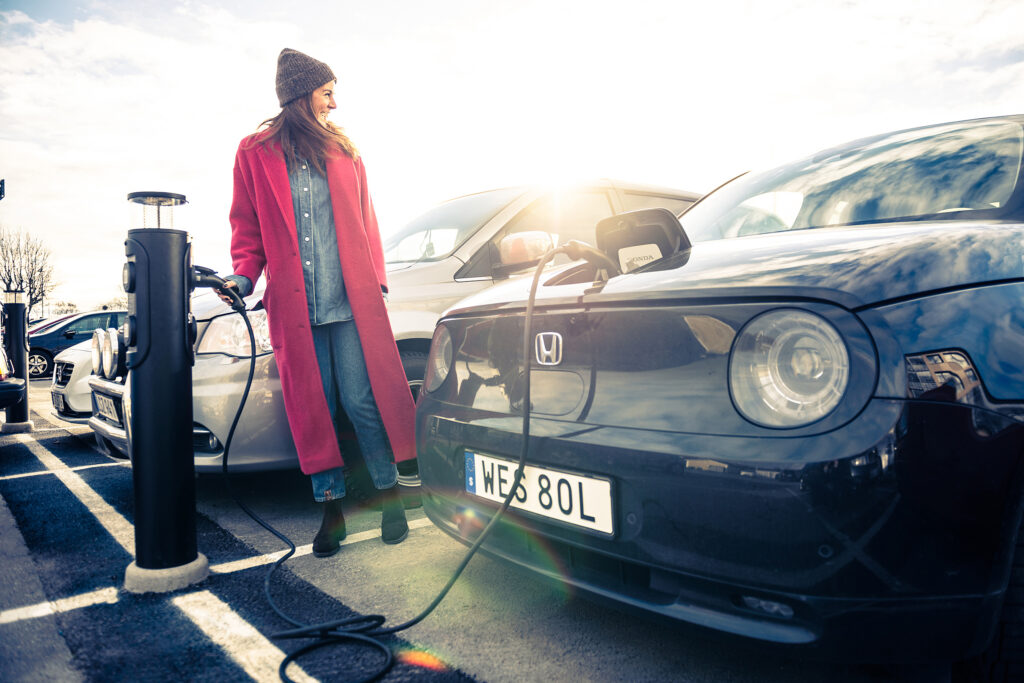
The technical development of charging stations is moving incredibly fast, it is becoming easier and easier to install and operate stylish and efficient charging stations in a BRF, a municipality or at a company that has a parking lot for its employees and customers. As a customer, you don’t have to spend any time managing, operating and charging for EV charging. With a simple app for the chargers and an overall portal for the customer, it takes care of itself.
But many observers believe that the roll-out needs to be faster. M Sweden has reviewed the roll-out of public charging points and believes that municipalities must take a great deal of responsibility, but that they need more support in matters relating to charging infrastructure.
To meet the recommendation of ten electric cars per charging point, around 26,000 new charging points are needed in the country. Only Gotland, Jämtland and Blekinge meet the requirements, while Stockholm, Skåne and Västra Götaland have the greatest shortage. Stockholm alone would need 13 000 new charging points.

One forecast suggests that we will have three million rechargeable vehicles by 2030. Somewhere between 75 and 100% of all cars sold in Sweden will be electric by 2030. This means that more than half of the country’s car fleet will be electric, according to Energiforsk and Power Circle. However, only a very small part of the country’s electricity production goes to charging electric cars, even if we were to replace all the country’s cars with electric cars. The website Allt om elbil says that Sweden’s electric cars have virtually no impact on our country’s total electricity production
As demand for electricity increases and our patterns of use change, it is important to create the conditions for increased electrification now. The Swedish Energy Agency sees the transition of the energy system as an integral part of societal development at local, regional, national and international levels. Electrification is fundamentally driven by the drive towards a more sustainable society, towards a Sweden with net zero emissions by 2045.
The Swedish Energy Agency also points out that all fossil-free power sources will be needed, and an important part of the transition is to create the conditions for the expansion of these power sources. Onshore wind power, existing nuclear power, offshore wind power and new nuclear power have the greatest potential to contribute. The Swedish Energy Agency is working to ensure that the transition of the energy system is secure, competitive and sustainable.

On March 19, 2024, the government presented an action plan that outlines the direction of future energy policy, with the aim of ensuring that Sweden has a robust electricity system with competitive electricity prices now and in the future. Electricity demand in Sweden is expected to increase sharply, and to meet climate targets and the green transition, both industry and transport systems need to be electrified. Now it is once again a matter of investing in weather-dependent power generation, but with basic power such as hydropower and nuclear power. The plan states that Sweden should have electricity generation with associated electricity grids in place by 2045 that will be able to supply about twice as much electricity, 300 TWh (terawatt hours), as today. A total capacity of at least 2 500 MW should be in place by 2035, according to the government. However, not only is more energy production needed, but the energy must also be available where and when it is needed.
According to Vattenfall’s calculations, we actually produce enough electricity to cover our needs already today, so much so that there is enough domestic electricity to charge five million electric cars. And even though electricity use in traffic is only expected to increase total consumption by about ten percent by 2045, according to Svante Axelsson, national coordinator of Fossil Free Sweden (a national initiative to make Sweden the world’s first fossil-free welfare country), smart charging solutions are needed where you can control your charging to times when electricity is cheaper.
The problem is that if everyone has to charge at the same time, we get power peaks. Power shortages and capacity shortages can mean that we don’t have access to enough electricity when we need it. Power shortage means that there is not enough at a given time. Capacity shortage means that the electricity grid is not able to transmit enough power. With ChargeNode’s smart solution, charging is distributed over time, you control the charging and get a more stable electricity grid. You simply charge when the load on the grid is low.

If electric cars are to be truly accessible to all, investments are needed in the public charging network. But there is enormous potential in public housing, housing associations, communities and workplaces. In addition, half of all new cars are purchased by companies and organizations, and if they choose electric cars as company cars and company cars and then invest in installing electric car charging in their parking lots, they contribute to more people driving fossil-free. Especially now that both installation and operation have become so much easier.
ChargeNode has developed a charging and payment service where the only thing the customer needs to think about is setting a price per kWh. Thanks to the simplicity and the fact that it is possible to earn back the investment in a charging facility, more and more people are seeing the opportunity to offer electric car charging to residents, employees and customers. If you choose ChargeNode’s service, you also avoid expensive power charges because the available power is distributed in a smart way. Which in turn means that more people choose to switch to electric cars.
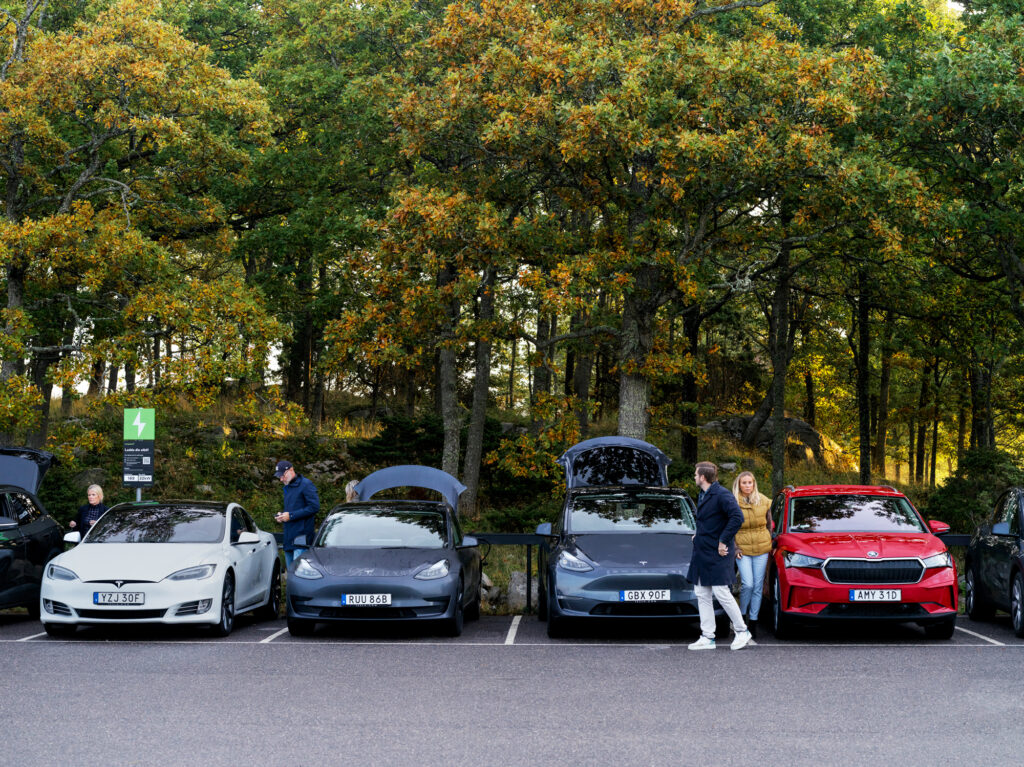
We have obtained information from the Swedish Energy Agency and Power Circle. The Swedish Energy Agency has been appointed by the government as the national coordinator for charging infrastructure. This means that they will coordinate support for charging infrastructure and provide information on the location of charging stations. Power Circle is an interest organization for the future of electrification that mainly works to develop and disseminate knowledge about the transition through various research projects and knowledge dissemination activities. About new technologies and future electricity systems. In this way, Power Circle can contribute to the development of society and the industry. The statistics are based on a database of public charging infrastructure in Sweden and current electric vehicles in traffic.
Some information also comes from Mobility Sweden, the Swedish trade association for manufacturers and importers of cars, trucks and buses, the Consumer Organization for Motorists and Other Road Users in Sweden, the news site Allt om elbil, and the National Strategy and Government Action Plan for Climate Adaptation in March 2024.
Rechargeable passenger cars 583 746
Rechargeable cars of the passenger car fleet 12%.
Growth of plug-in vehicles in 2023 27%
ChargeNode integrates the payment solution with many leasing companies such as Ziklo Bank, Autoplan, Leaseplan, Bilreda and others.
We can integrate with your own business-critical financial and operational monitoring systems to make charging an integral part of your business with minimal administration.
Advanced troubleshooting and remediation.
If you prefer digital contact with us over the phone – no problem, we offer automated support via our AI bot on the website.
Web-based help center with instructive videos and texts explaining how our portal and app work.
Personalized service around the clock.
Personalized service around the clock.
We offer different levels of service based on your needs.
Collect all your charges on a single invoice with our business account. Convenient for those with pool or staff cars.
Public charging points with a power above 50kW must offer payment with a physical payment terminal. We offer a pre-integrated payment terminal through our partner Adyen – pre-configured with our intuitive interface for selecting charging outlets and charging status.
Want to use your own app? We offer integration with other apps via the industry-standard OCPI protocol.
Pay without an app by scanning the QR code on the charging socket and entering payment card information. Support for ApplePay/GooglePay makes this an easy and attractive option for infrequent shoppers such as passing tourists.
As a charging customer, you always have free access to the ChargeNode mobile app for iOS and Android. Here you can easily activate charging, see a map view of ChargeNode’s public charging points and receive ongoing information about charging status. Here we can also provide information and help with the service. If your company is connected to ChargeNode, you can easily switch between private and business charging. You can also easily charge without the app via an assigned RFID tag.




Charge easily with ApplePay/GooglePay!
Fast, secure and contactless – choose Apple Pay or Google Pay at checkout for an easier payment experience, directly from your mobile.
Export of all session data and history for import into a separate BI tool.
Access to all invoices and invoice specifications as downloadable pdf.
In our portal, you can easily view and update the price for your area. You choose how you want to control pricing – we offer three flexible options:
Fixed price
With a fixed price you set a specific price per kWh including VAT.
Variable Monthly Price
The Variable Monthly option follows the current Nord Pool price based on the electricity area you belong to.
Scheduled price
Scheduled price allows you to set different prices for different times of the day or different days of the week.
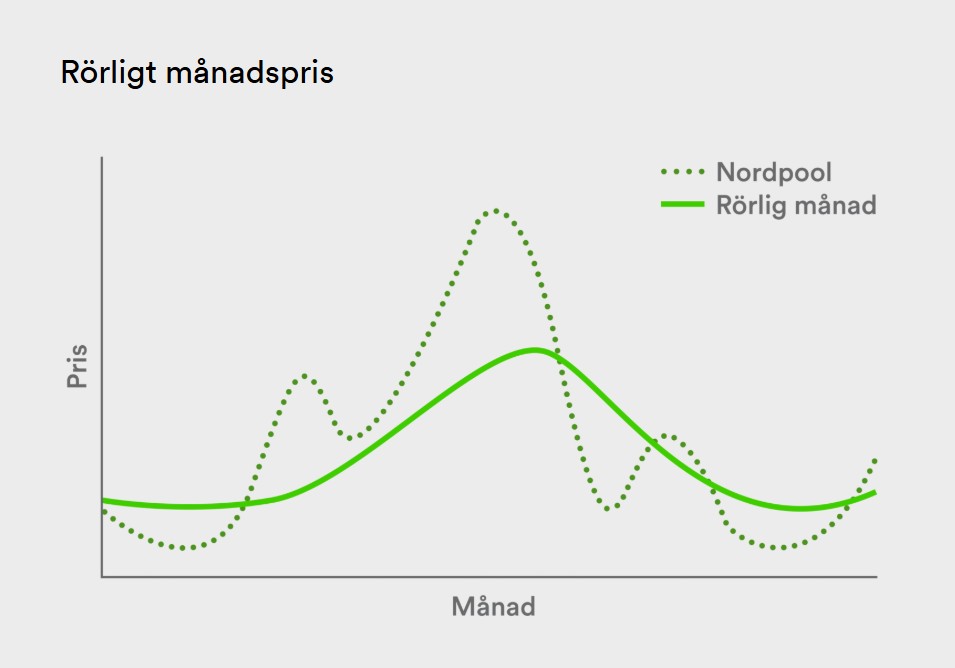
Easily manage who can access your charge points, create member groups and price discounts.
Our powerful dashboard gives you a complete overview of your charging facility – from energy consumption and power peaks to charging patterns and unique users. Visualize user data, identify areas for improvement and make smarter decisions based on real insights.

Connect sockets to a specific user profile to automatically start charging when the cable is plugged in.
Start and stop charging with RFID tag.
Direct connection to Nordpool for loading spot prices (of hourly and quarterly prices). Enables smart pricing models to maximize the profitability of your charging portfolio.
System support to support the loyal network owner or Svenska Kraftnät when needed.
Restart the charge points automatically in case of power failure (Hardware dependent)
Prioritize individual outlets for e.g. mission-critical operations such as pool cars, service cars to ensure that the cars are always prioritized for charging so that operations do not stop. When priority outlets are not active, available power is distributed to other outlets to constantly maximize the charging capacity of the entire system
A dynamic power schedule gives you full control over the maximum power of your plant – adapted to the daily load and grid cost. The graph above shows how the schedule (green line) controls available power depending on time, while actual power use (black line) is safely within these limits.
Advantages of the power scheme:
The result: lower costs, more stable operation and more sustainable use of the electricity grid – perfect for homes, businesses and depot charging.
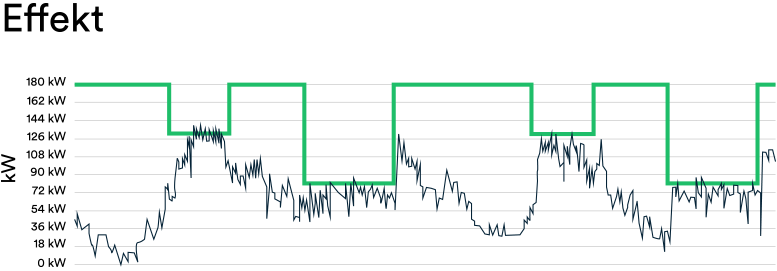
Charging all vehicles at full power at the same time is neither energy efficient nor economically sustainable. By instead prioritizing charging based on the vehicle’s departure time, we can use the available power in a smarter way – without leaving anyone with an empty battery.
Advantages of departure time controlled charging:
This type of dynamic control is particularly suitable for residential, commercial and depot charging – where vehicles are parked for a long time but do not need to be charged immediately.

Our backend load balances all OCPP compliant hardware to protect the property’s main fuse against overload and at the same time maximize the total power available for EV charging. We can load balance statically against a fixed power budget or dynamically, which means that the power budget for charging in real time relates to the property’s power consumption. We support both DLM (Dynamic load management) and ALM (Adaptive Load Management) standards.
With our intuitive alarm management module, you can keep track of the operational status of your charging infrastructure. It analyzes fault codes, automatically classifies alarms and suggests actions – so you can act quickly and efficiently.
Smarter service starts with the right insights – at the right time.

In addition, you monitor the charging points’ session data, see limits for e.g. uptime, automatically generate alarms and suggest action.
Our backend is integrated with an OCPI-compliant API that enables standardized and secure communication with other e-mobility systems and actors. This makes it easy to exchange data with external platforms – without exposing our entire infrastructure.
Advantages of our OCPI-API:
Our API is the obvious interface to create seamless charging across network boundaries – without compromising control or data security.
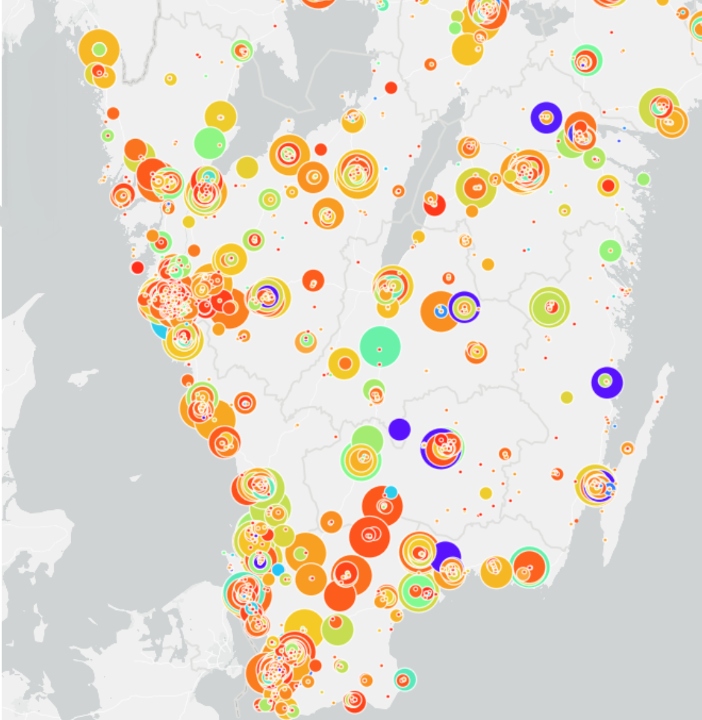
ChargeNode handles the payment with the charging customer and reimburses the facility owner via a self-invoice, completely without administration. All you need to do is post the invoice.
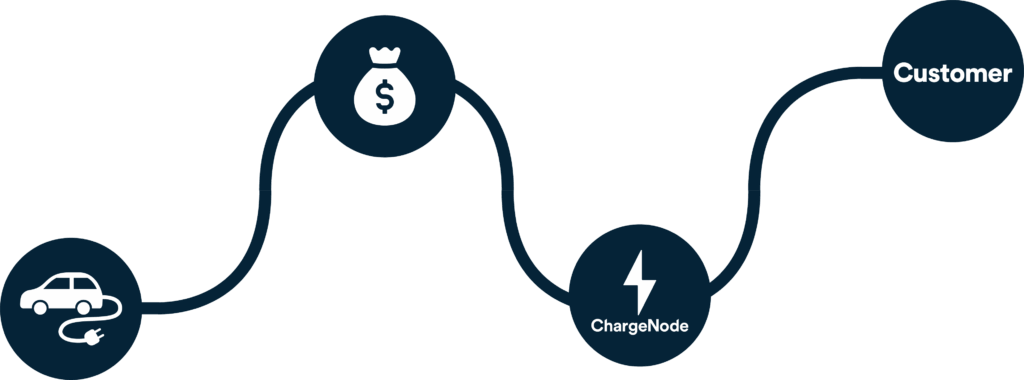
We have worked with almost all types of hardware and most brands of charging stations for many years. We have a deep understanding of how they work in operation and this is knowledge that we bring to every meeting and every decision. We have also developed our own hardware which, to put it mildly, is probably the best on the market.
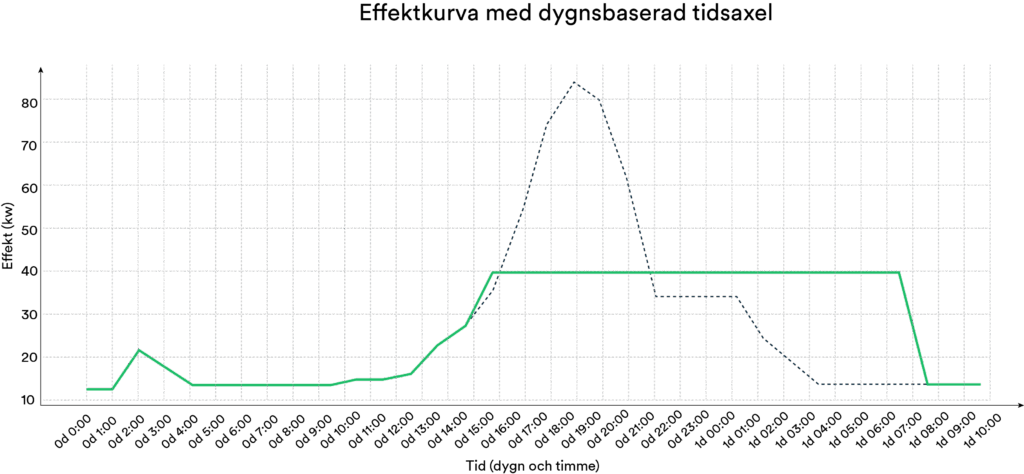
Er anläggning driftsätts i vår portal och ni får tillgång till er kundportal. Vårt Customer Success-team står redo att erbjuda utbildning i portalen om så önskas. Under hela avtalstiden garanterar vi laddkunder support 24/7, 365 dagar om året. Vi är alltid tillgängliga via telefon för att hjälpa.
Vi har jobbat med nästan alla typer av hårdvara och de flesta märken på laddboxar i många år. Vi har en djup förståelse för hur de funkar i drift och detta är kunskap som vi tar med oss i varje möte och varje beslut. Vi har dessutom utvecklat en egen hårdvara som, om man ska sticka ut hakan lite, troligtvis är den bästa på marknaden.
